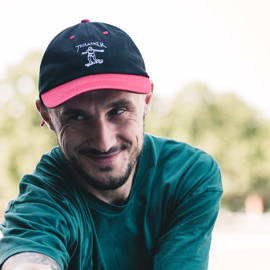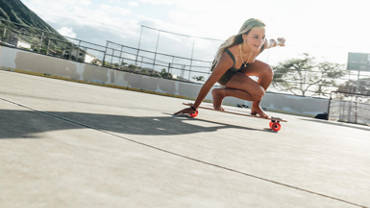The best thing about skateboarding? You can do it nearly anywhere. Don’t worry if the closest skatepark is an hour away from your hometown. For the basics of skateboarding, you only need a flat ground and of course, a skateboard. To start, a complete setup is the best choice, but we urge you to not take the cheapest one you can find - proper Completes will last you a lot longer and you'll have more fun. From there on, you can start working on getting a feeling for the skateboard. As soon as you are feeling comfortable on the board, you can try to Ollie, which sets you up for most of the tricks you can do on a skateboard. Beyond that, there are no limits. So, what are you waiting for? Get some griptape underneath your shoe and go skateboarding.
Navigation:
- Stance
- Turning and stopping
- Your playground
- Falling
- What gear do you need?
- Ollie
- Pop Shove-It
- Fakie Ollie
- BS 180
- Kickflip
- Heelflip
- Nollie
- 360 Pop Shove-It
- 360 Flip
How To Get Started On A Skateboard
First things first, are you a goofy or regular rider?
This means you either have your left foot in the front and push with your right foot (regular) or your right foot in the front and push with the left foot (goofy). To find out which stance (= the position of your feet on the board is called stance) you are, there are several options. One of the most common ones is the “push test”: let a friend push you from behind while standing firmly on the ground. The foot that goes forward to prevent a fall is usually your front foot. You can also do this test on your own, by closing your eyes and lean forward until one foot goes forward. You can also just stand on the skateboard and go in both directions – you will quickly realize which one suits you better.
Now that you know your stance, you can try to roll on your skateboard. Place your front foot firmly on the board, right on the front screws with your toes pointing to the board’s nose. Now it's time to push. Place your back foot on the ground slightly in front of your front foot right next to your board. Then push your body and board forward. Voila, you should be moving into your nose’s direction. By pushing more and faster you can generate more speed. If you feel you have enough, place your back foot on your tail. Especially for tricks like the Ollie you have to shift your front foot into a parallel position.
Turning and stopping
Now that you are moving, you probably don’t want to keep going in one direction. So this is how to turn on a skateboard: Depending on the adjustment of your trucks, it will be easier or a little harder. You just need a tiny bit of pressure on your toes or heels to turn the skateboard. This is easier with loose trucks. For regular riders, pressure on your toes will lead to a right turn, pressure on the heels to a left turn. For goofy riders, it’s the other way around. If your trucks are a little tighter, you will need to put more pressure on the side you want to turn to. The more pressure you put on, the tighter your turn will be. Be aware of “wheelbite” though – meaning your deck coming too far down and touching your wheels or even bringing them to a sudden halt.
Speaking of a halt: Once you get moving, you also need to know how to stop that movement or slow it down on purpose. The easiest and safest way to do so, is to use your back foot as an anchor. Lift it from your board and place it next to it to the ground. Drag your heel on the ground until you’ve slowed down enough or stopped entirely. More pressure on the ground makes you stop faster. If you you can’t safely stop in time, better step off your board. More advanced riders can also break or slow down with a powerslide.
Your playground
If you ask yourself “Well this is all nice to know, but where do I even go to skate?”, don’t worry: you can basically skate pretty much everywhere. The best place to get started is a mostly flat surface with not many cars or other delicate things around. Most skateparks offer just that, but make sure not to be in the way of the more advanced skaters. Also, better keep away from the areas behind obstacles. In the skatepark you will also be able to meet and learn from other skaters, so this should be your go-to-place to get started and learn.
Skateparks also mostly feature one of the best skateable surfaces: concrete. It’s usually smooth and easy to push on, that’s why it’s also Marco Kada’s favorite playground. You can skate basically on all kinds of grounds, but some are not well suited (like the red rubbery tartan tracks in stadiums or outdoor courts). Asphalt/tarmac usually works well. Sometimes it can be a little rough and also gets softer on hot days. This makes your wheels stick more to it and heighten the chance to fall on your landings. Wood floors usually work, but beware of the cracks between planks. They should also not get wet, as they get very slippery then. Same applies to plastic surfaces. Marble is a skateboarder’s dream surface, but hard to find, and the owner might not like you skating it. Most ramps are made of specially treated wood (to make it water resistant), plastic and metal, the latter mostly on the obstacles edges or copings.
It will happen once or even twice..
Don’t be afraid to fall. It will happen anyways. If it comes to it, make sure to tighten your muscles to prevent tearing your ligaments. Also trying to roll after a fall can distribute the energy better, so the impact is not as hard. Either way, you should definitely wear protection when you start skateboarding. What kind of protection you need is easy to list: Most important is a helmet to prevent head injuries. Knee and elbow pads will come in handy as well, especially the kneecaps don’t like being fallen on. Wrist guards will also help keep your wrists unbroken and your hands less torn open, which is one of the most common injuries in skateboarding. Don’t listen to people telling you protection doesn’t look cool. You know what’s not cool? Getting injured because of that.
What gear to get?
Now that you've licked blood and want to get into skateboarding, you should think about the gear you need. Besides skate shoes and protection, you'll obviously need a skateboard. Our Skateboard Buyer's Guide will help you find the right one for your needs!
The first skateboard trick: Ollie
When you feel comfortable riding around, it’s time for skateboard tricks. The Ollie is the first trick you need to learn. It’s the base on which almost all further skateboard tricks build on, so make sure you get this really well.
Your feet are placed on your board in the most basic stance for tricks: your back foot rests in the middle of your tail, not too far to the left or right. Your front foot right behind your front screws. The Ollie movement consists of two main directions. First, you push down hard on your tail with your back foot until it hits the ground. Secondly, right after that, you drag your front foot forward and up to adjust your board into a horizontal position again. You use your outer sole to create the grip while dragging it over your board. This is also why we recommend skate shoes over sneakers or running shoes. They are not meant to be dragged over a sandpaper-like surface over and over again.
When you managed to get your board into the air, make sure your feet are over the board so you can land safely. Your first Ollies won’t be high or far. But as soon as you got that distinct movement right, it’s just a matter of time and lots of practice to make it bigger!
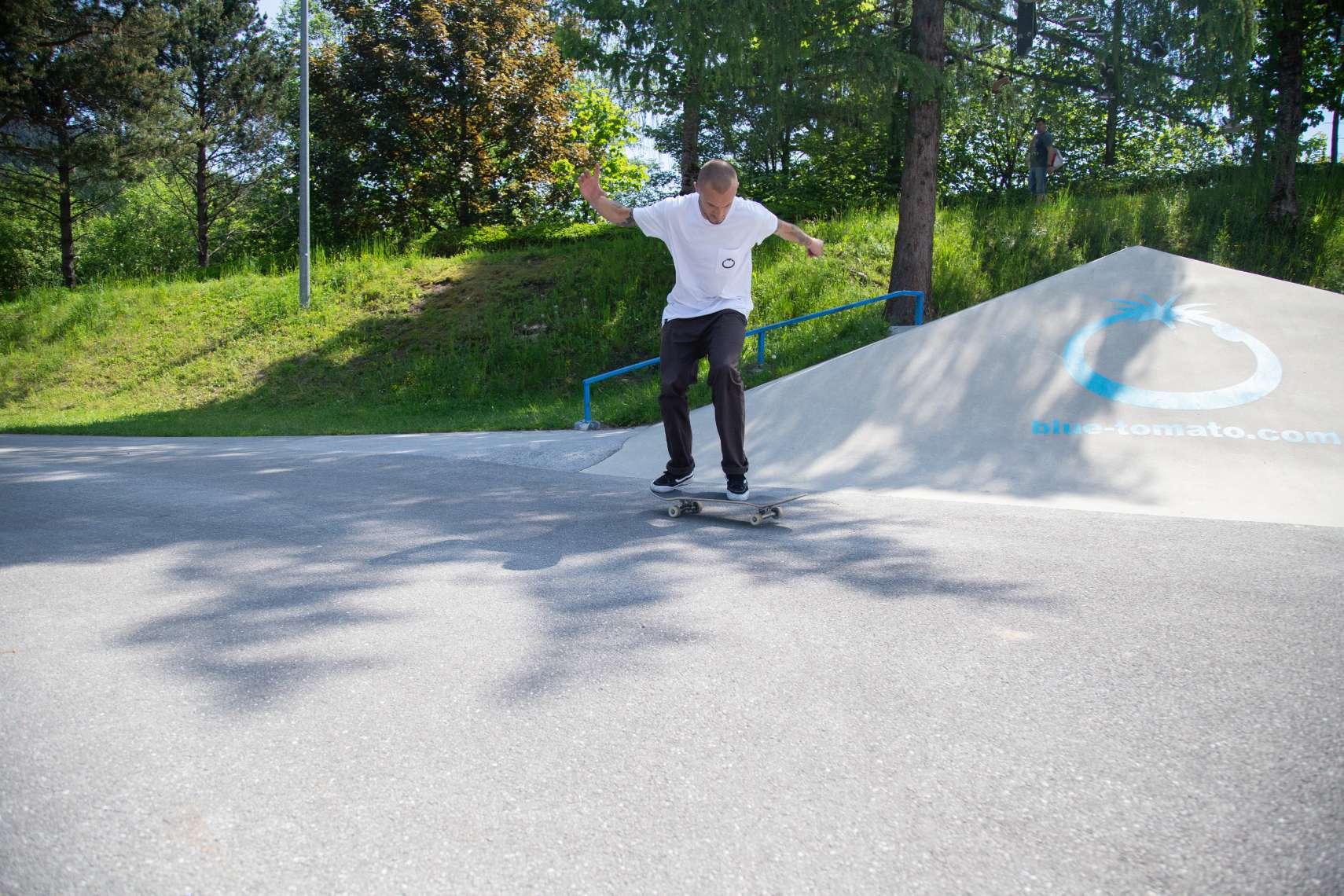

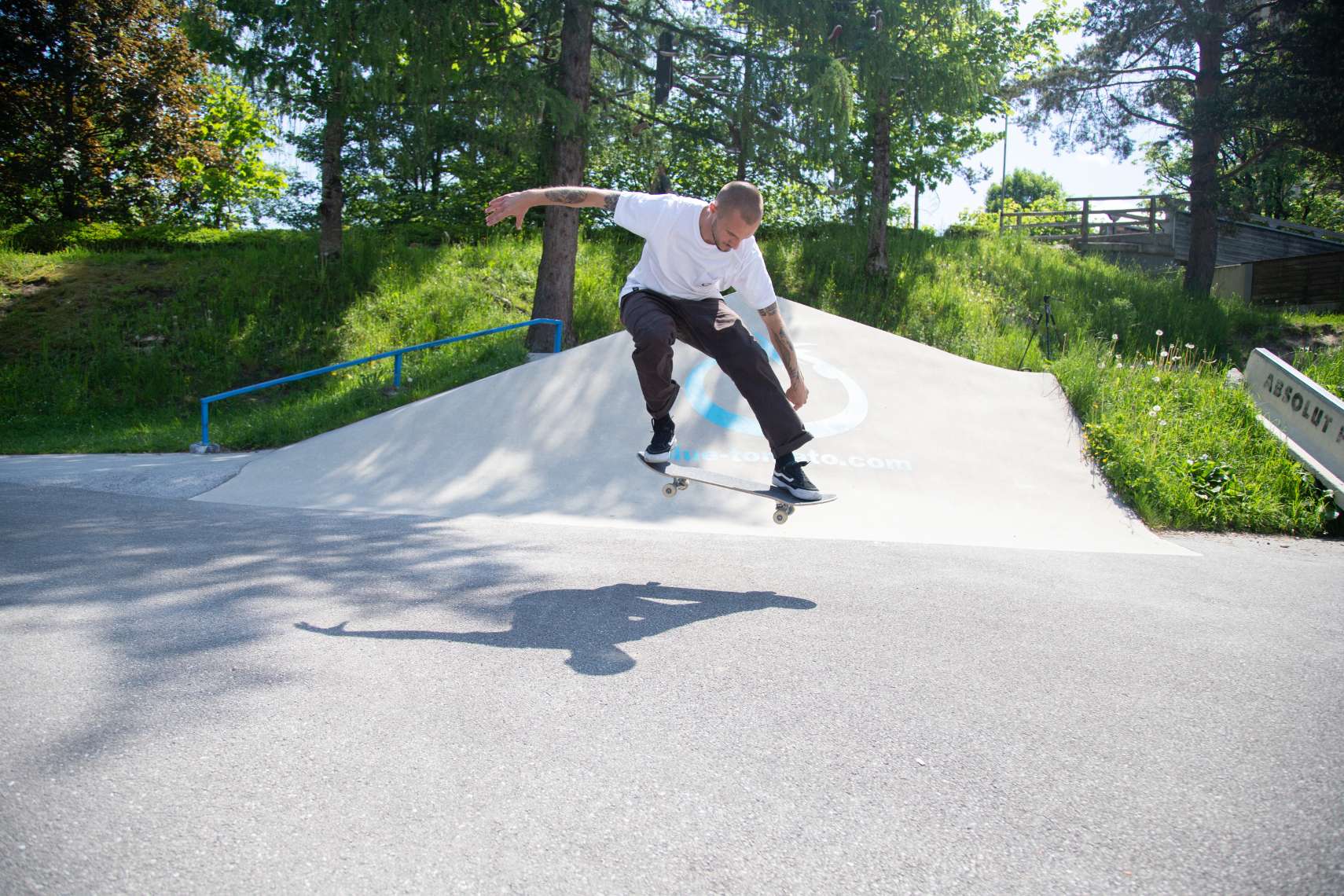
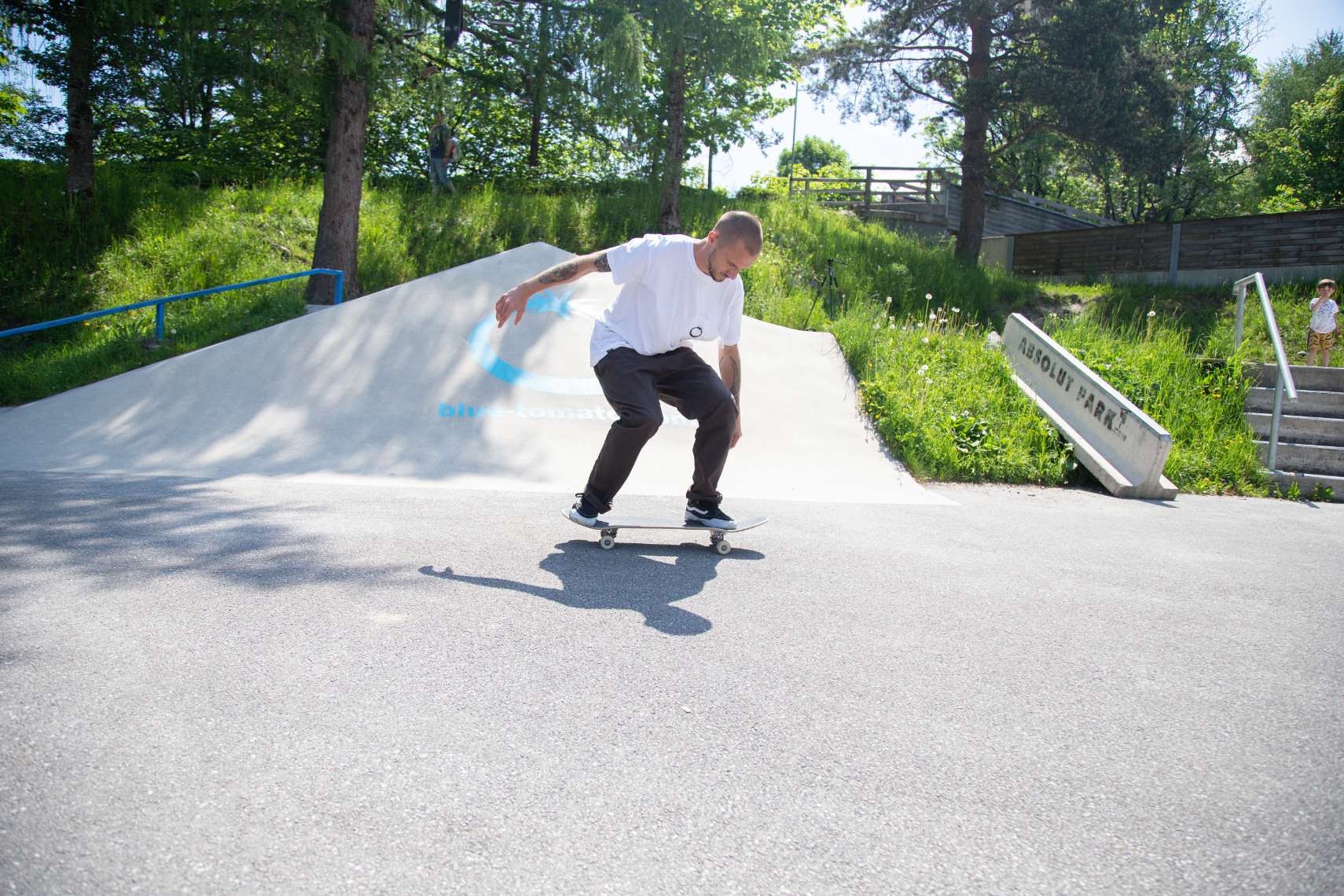
Expanding your bag of tricks: The Pop Shove-It
The Pop Shove-It combines the Ollie with your board doing a 180 degree horizontal flip. The board’s nose draws a half circle in front of your body. So your board’s nose becomes your tail. To get your board into this motion, the positioning of your back foot is slightly different than for the Ollie. Your toes should be in the so-called “pocket” of your skateboard’s tail. This means more of your foot is actually on the board and your toes are almost on the toe-edge. When you now push down on your tail, you also drag it back. This will create a scoop pushing your tail behind you and bringing the board around 180 degrees. The front foot motion is the same as for an Ollie, so you drag it forward over your board. Make sure to get the "Pop" in Pop Shove-It and the scoop will bring the board around easily. Catch the board with your feet when it comes around 180 degrees, land it and ride away!
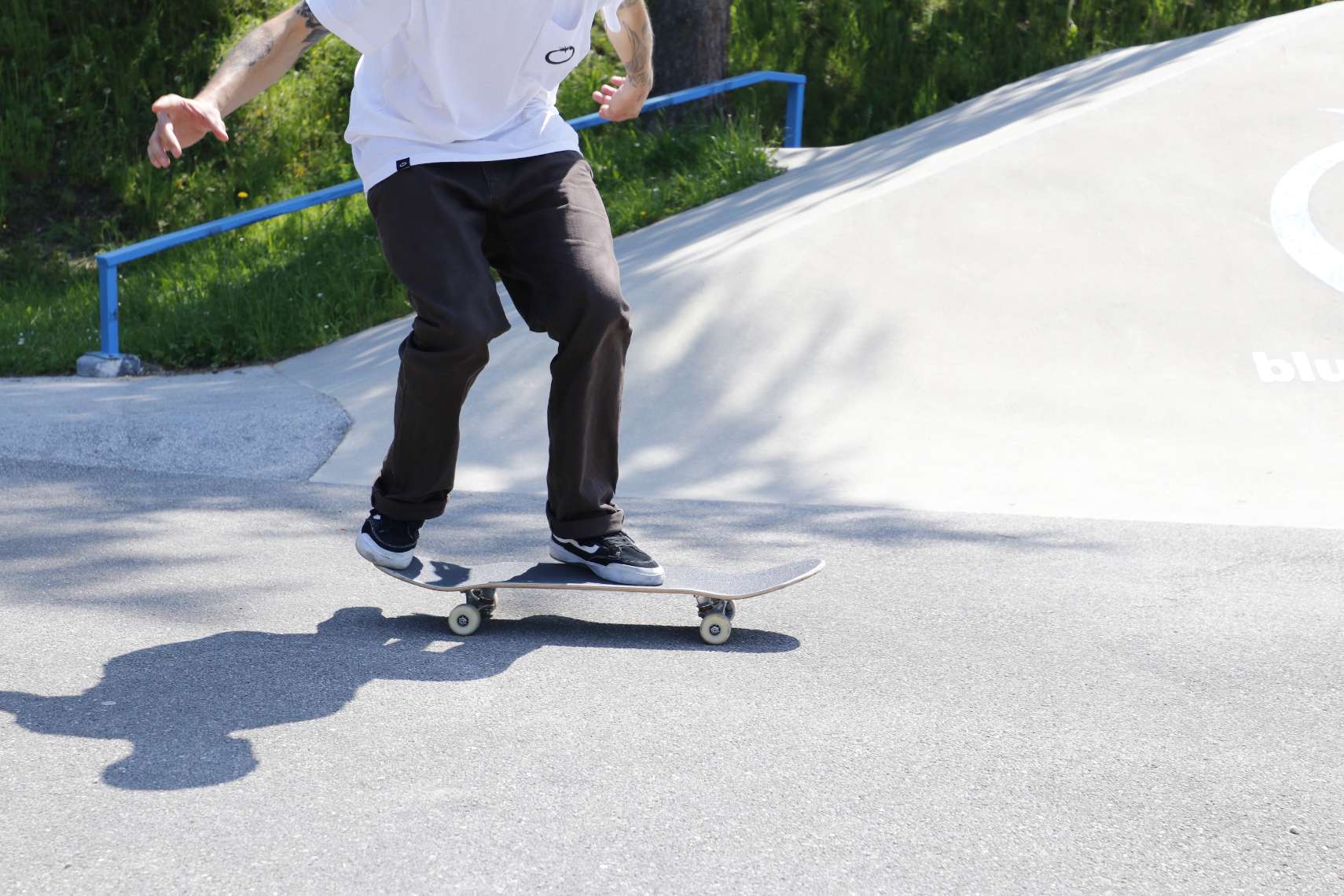
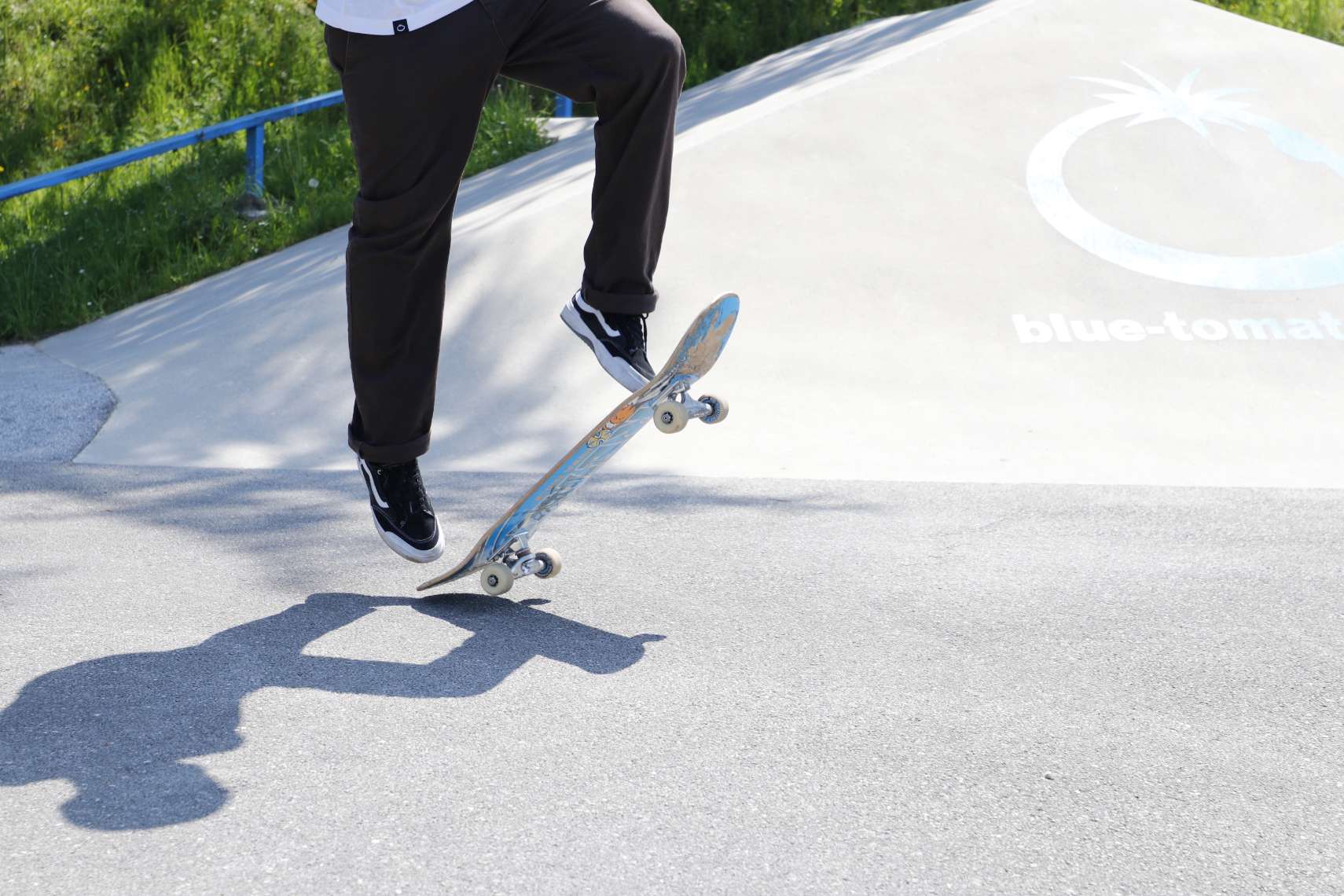
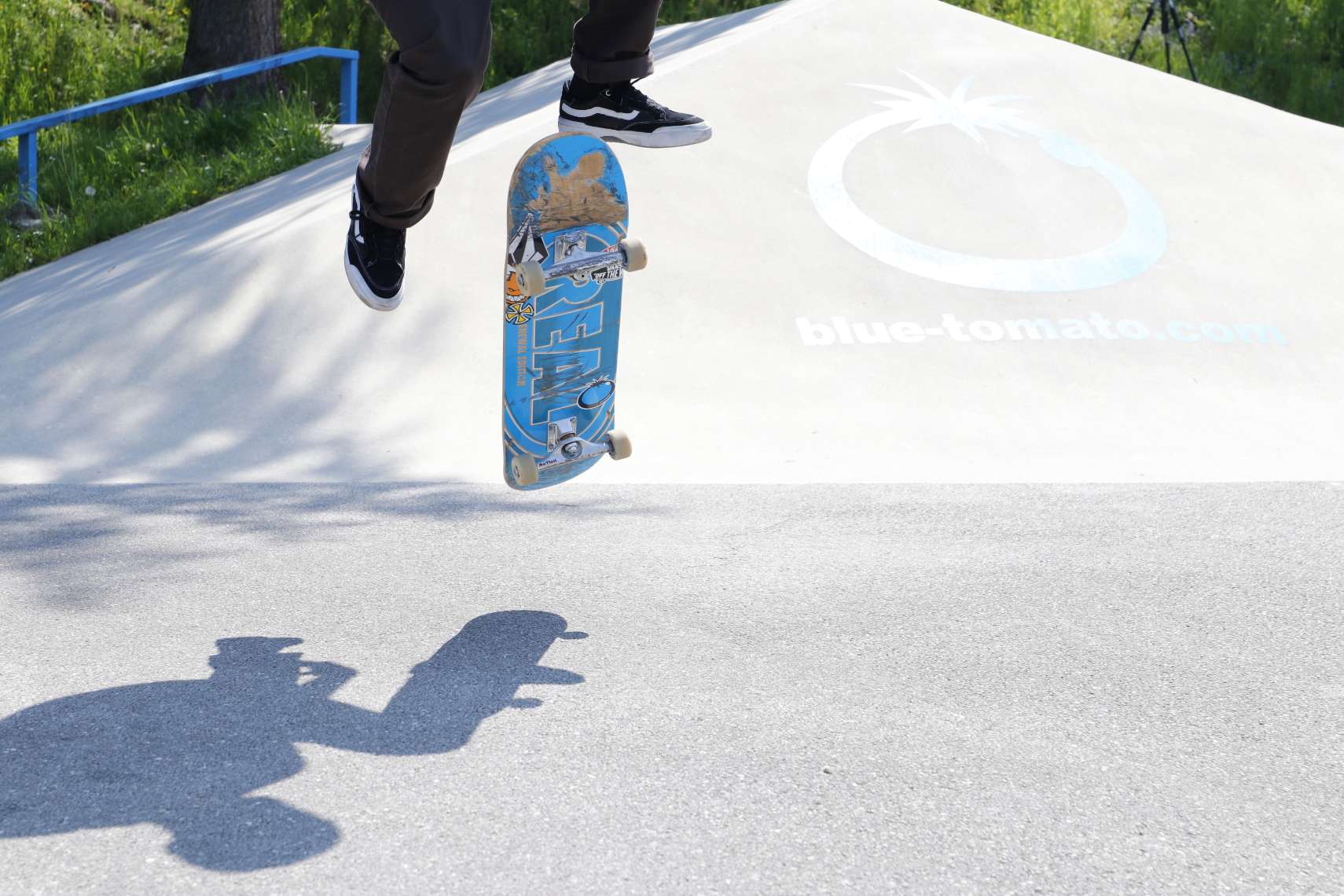
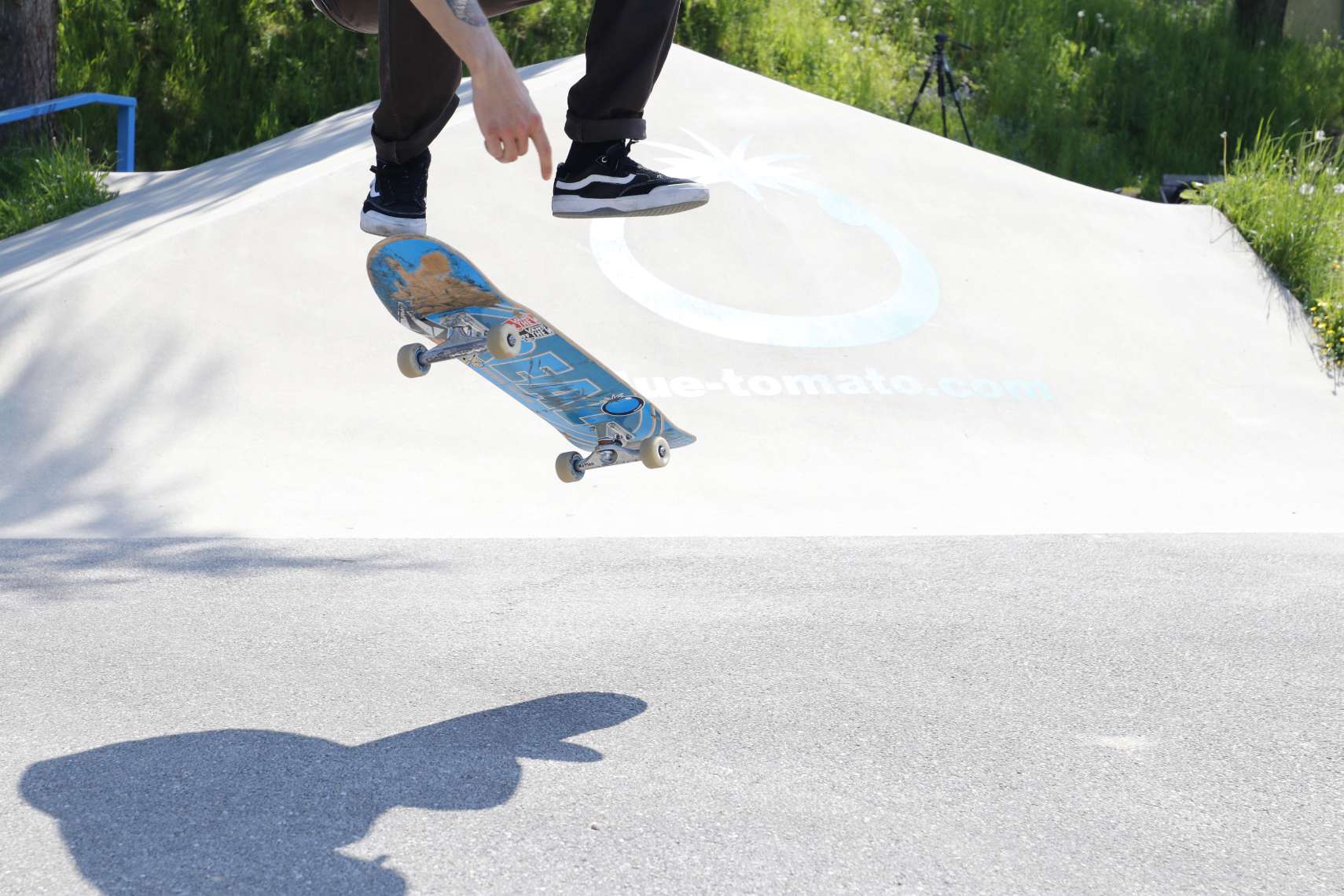
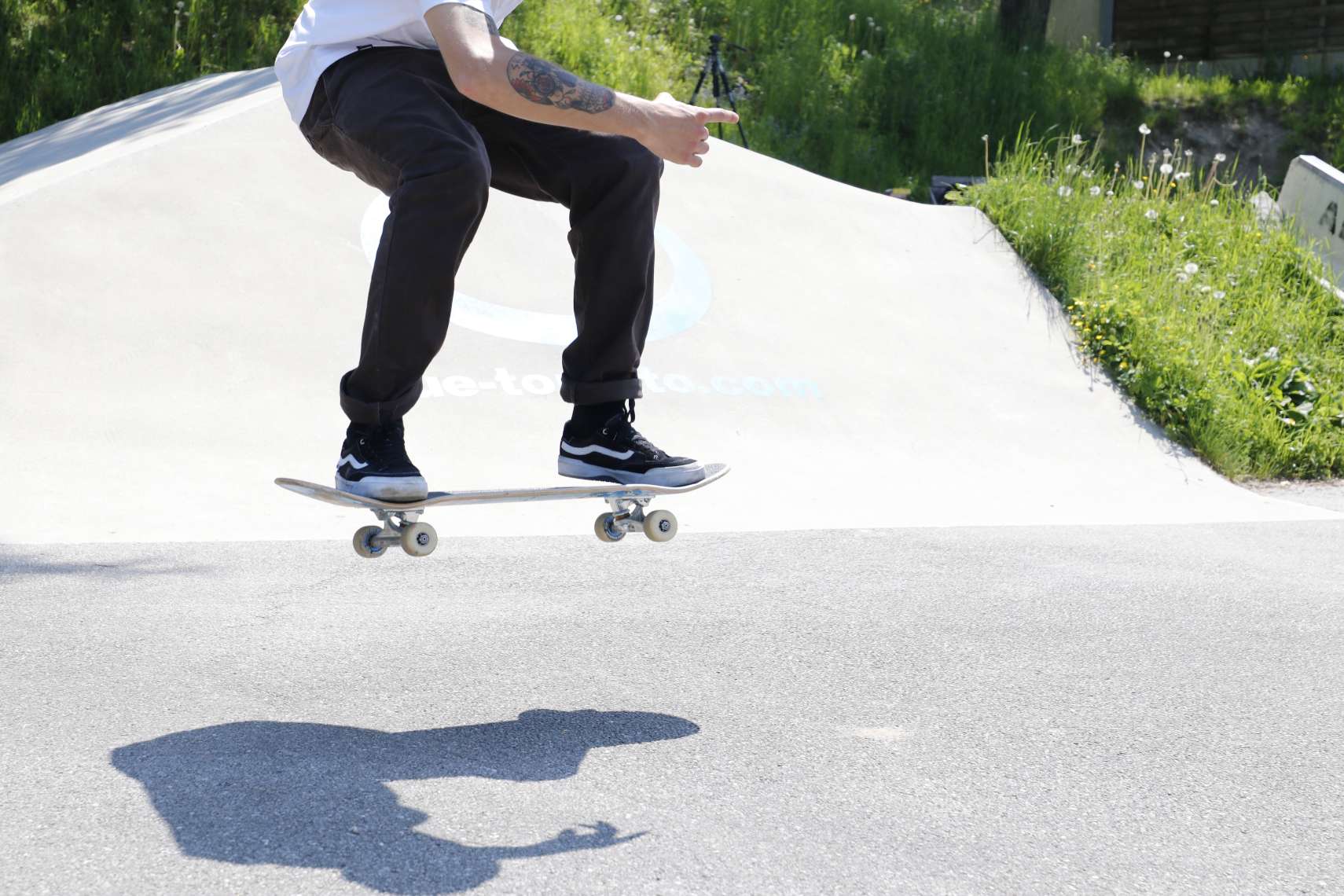
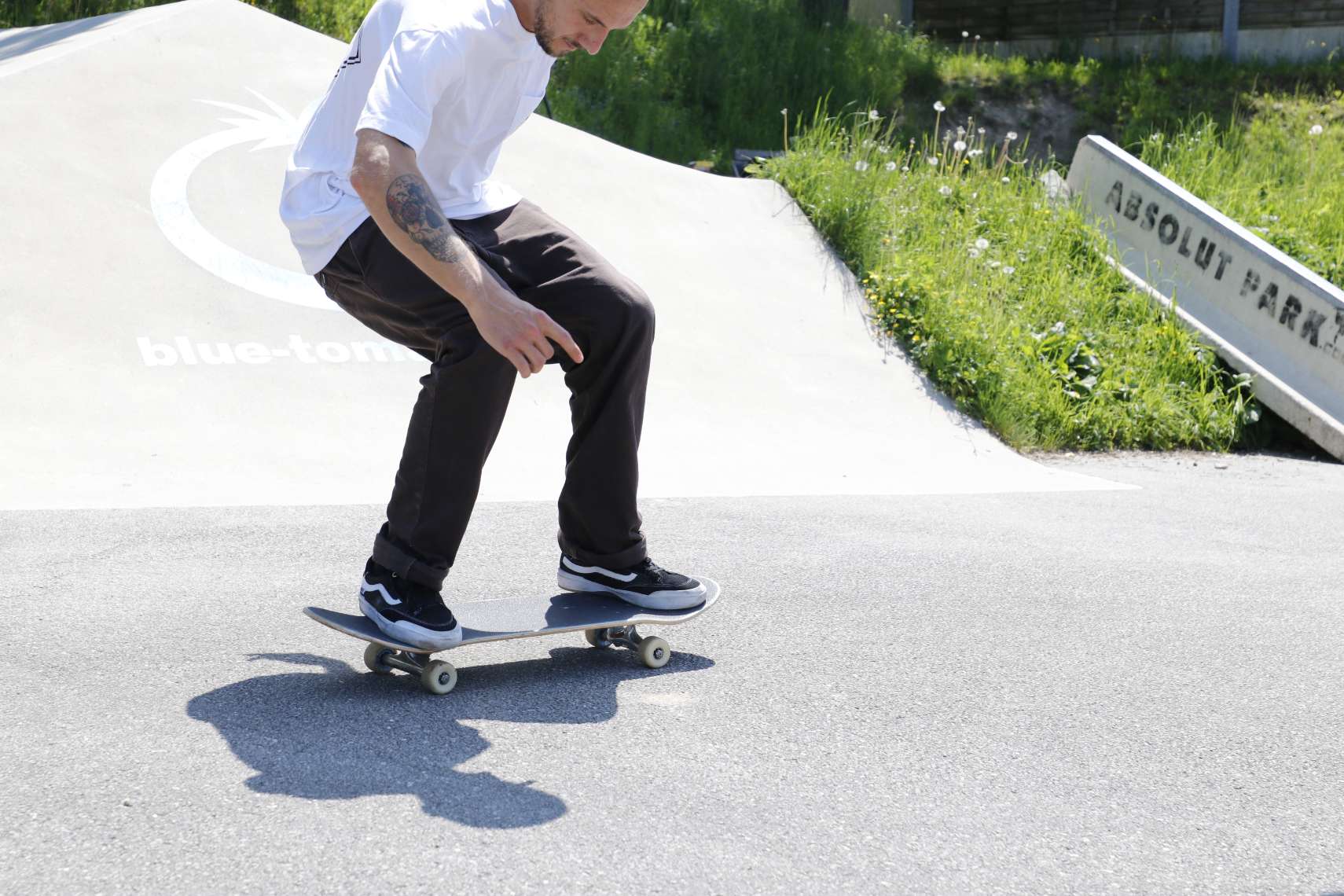
The basic for Fakie Tricks: The Fakie Ollie
The Fakie Ollie is basically the same trick as the normal Ollie, only that you roll in the "backwards direction" which is called "fakie". This unusual rolling movement makes it a little bit harder than the normal Ollie. The foot position is exactly the same as with the Ollie. When riding in fakie stance, what usually is your back foot becomes the foot in front, but still counts as your back foot. For the fakie Ollie, place your back foot in the middle of the tail and your front foot right before your screws.
To move the skateboard horizontally in the air, you push your tail down with your back foot and pull your front foot forward (or backward in the new direction of riding). The landing is a bit harder with the fakie Ollie than with the normal Ollie, so make sure that your shoulders always stay straight to the board to avoid rotation. Also try to land safely with your feet right above the screws.
A fakie Ollie is not only the base of all Fakie tricks, it can also look very cool. Have fun practicing!
Your first spins: BS 180
An important and stylish basic trick: The BS 180! Once you feel confident on the skateboard and mastered the Ollie, you can go for the Backside 180. Backside describes the direction of your body's rotation, 180 the number of degrees by which you turn: Backside means that you turn your back in the direction of movement, which means clockwise for regular riders and counterclockwise for Goofy riders. You turn 180 degrees, which is half a turn. Your board turns with your body, so it stays under your feet during the jump. It is important to pop as high as you can to turn completely. The foot position is the same as with the Ollie and the foot movement is very similar to the Ollie. The only difference is to push your tail back a little bit so that your board turns 180 degrees while your body does. The most important part of this trick is the shoulder movement. For a good spin in the air, your shoulders should determine the direction of the spin - don't hesitate here, but turn them into the backside direction when taking off.
If you pop hard enough, pull the board in the BS direction and start the 180 degree turn with your shoulders, the BS 180 won't be hard for you. Timing is definitely the deciding factor with this trick. Go for it!
Level up: The Kickflip
One of the most iconic and well-known tricks in skateboarding is the Kickflip. Originally invented in the 70s, it was modified and popularized by the legendary Rodney Mullen. Since then it has become “the trick” to have in your bag of tricks. “Do a kickflip” is something people on skateboards get shouted at very often. Actually being able to just pull one in that moment is kind of awesome.
A kickflip will have your board rotate on its longitudal axis, meaning the nose will always be in the front, but the griptape will be at the bottom mid-flip. In a kickflip, the board flips towards the rider, opposed to the heelflip, where it flips in the opposite direction.
To set up a kickflip, make sure your backfoot is located centered on your tail, just like you do for an Ollie. Your front foot is positioned slightly towards your heel edge, leaving a little less of your foot on the deck than for the Ollie. The beginning is the same as for the Ollie: put a lot of pressure on your tail until it hits the ground. Then you continue with the so-called “flick”. Instead of dragging your front foot straight towards your nose, you need to give it a diagonal direction towards your heel edge. Make sure to still have enough forward drag, but the diagonal movement will lead to the board flipping over.
When you can see the griptape again, place your feet back on the board. That’s also called the “catch”. As with all the tricks, try to land in stable position. Ideally with your feet above the screws.
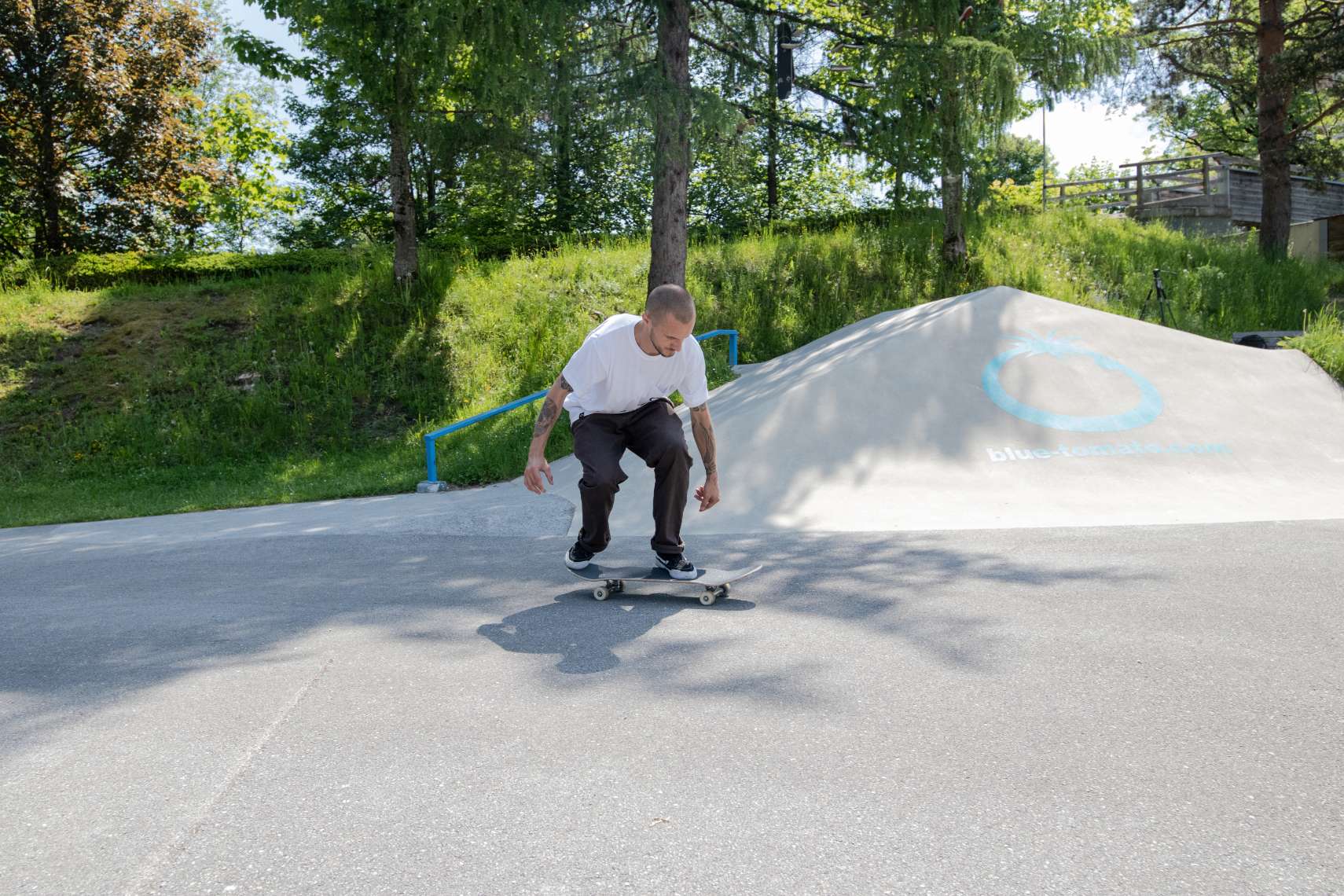
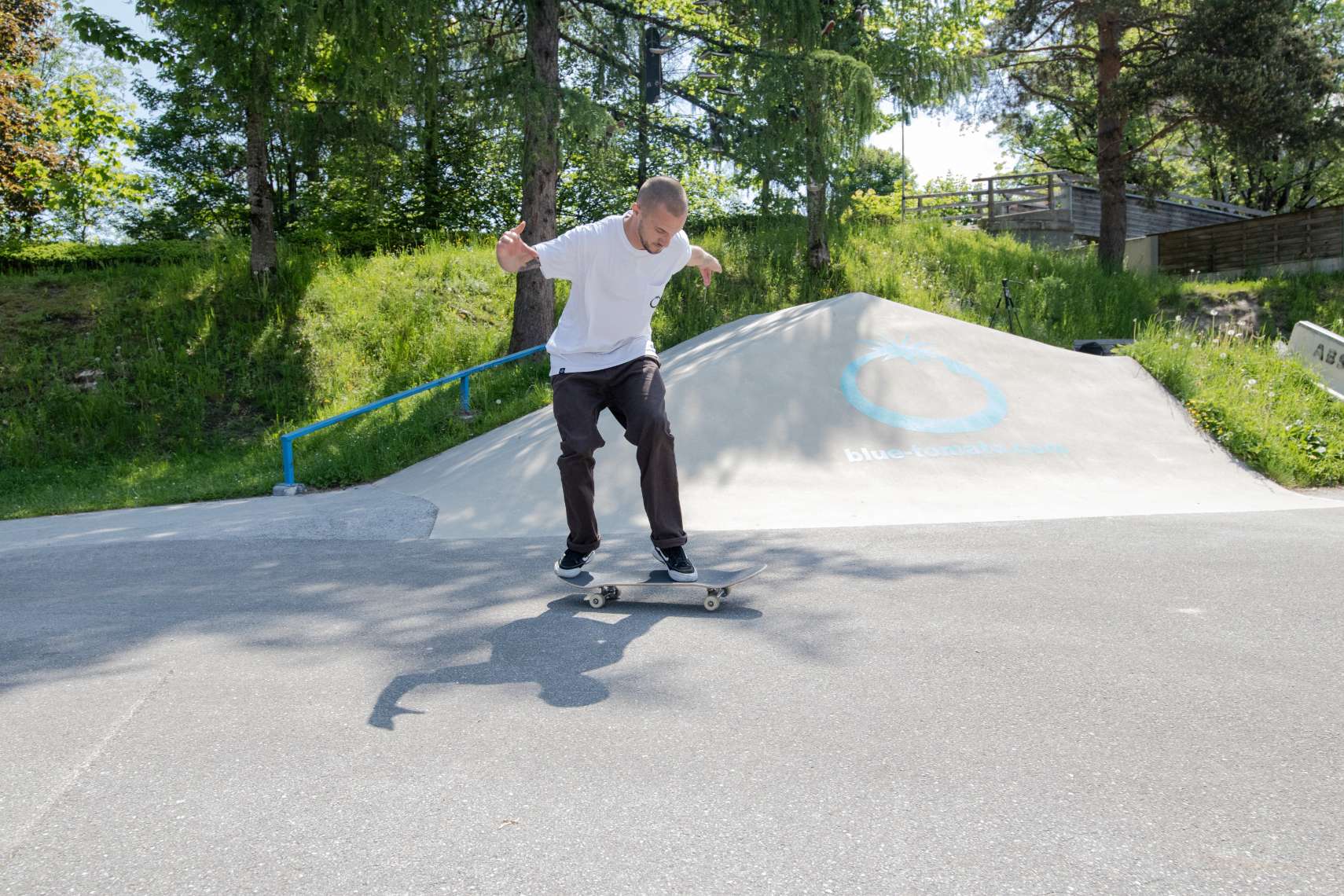
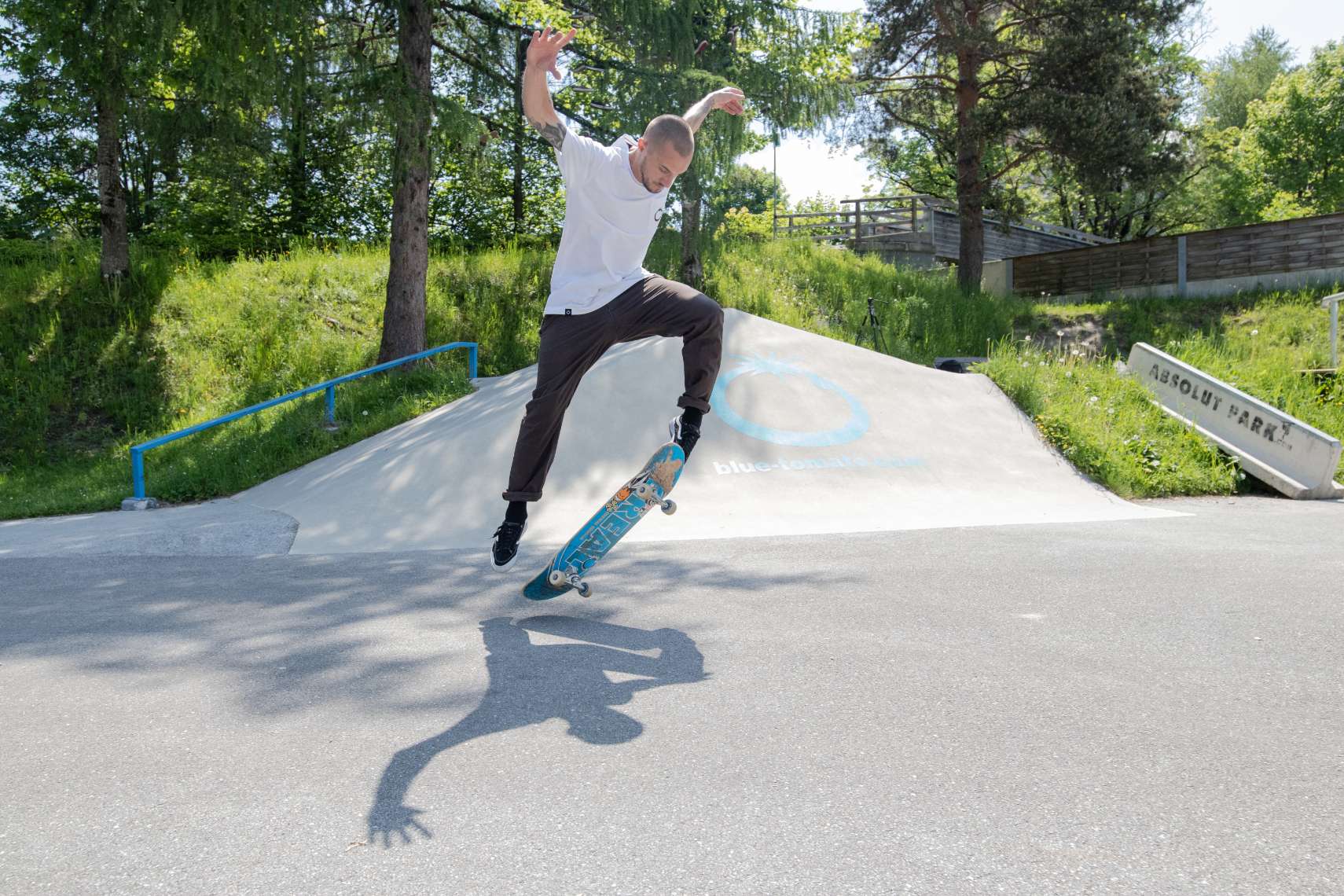
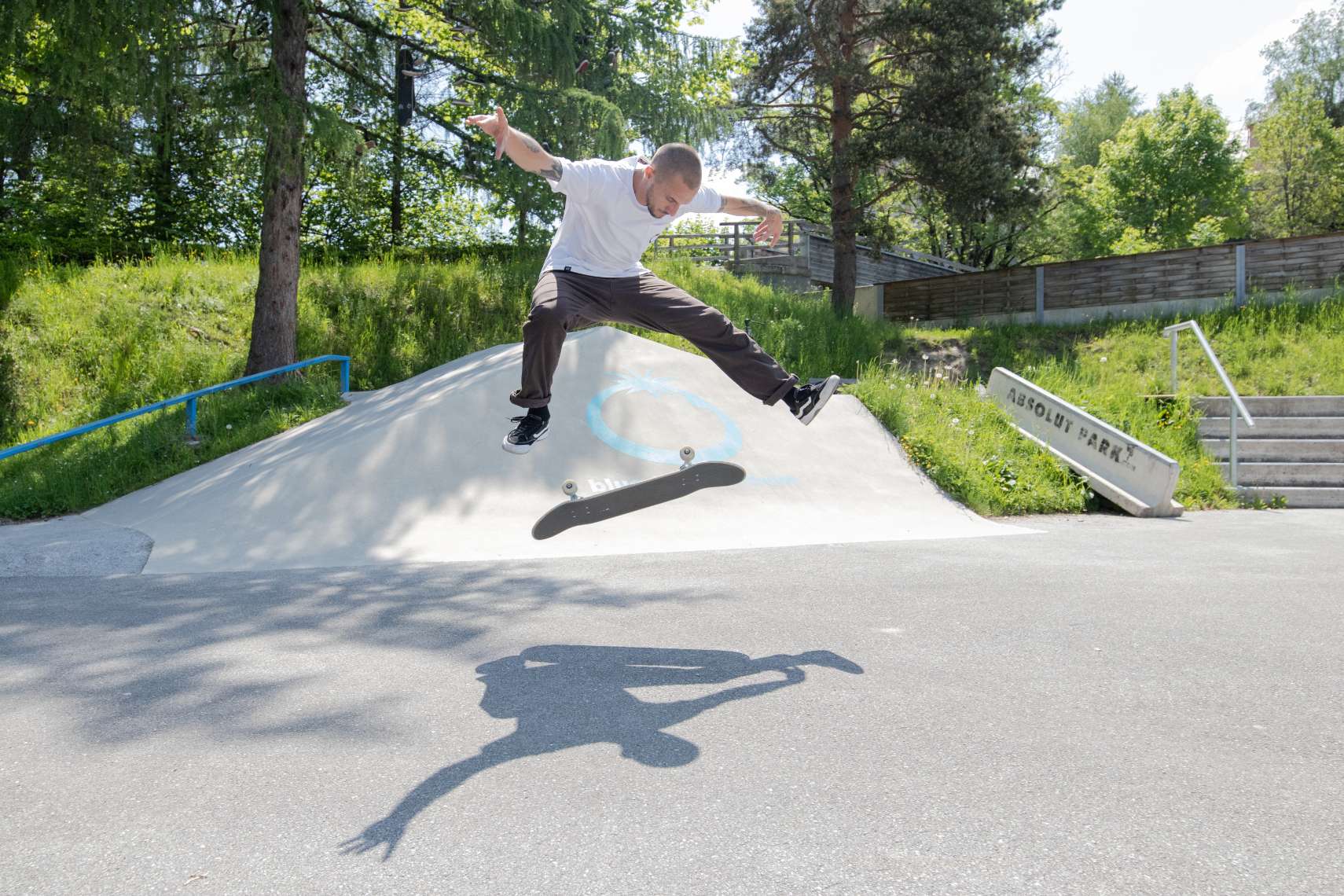

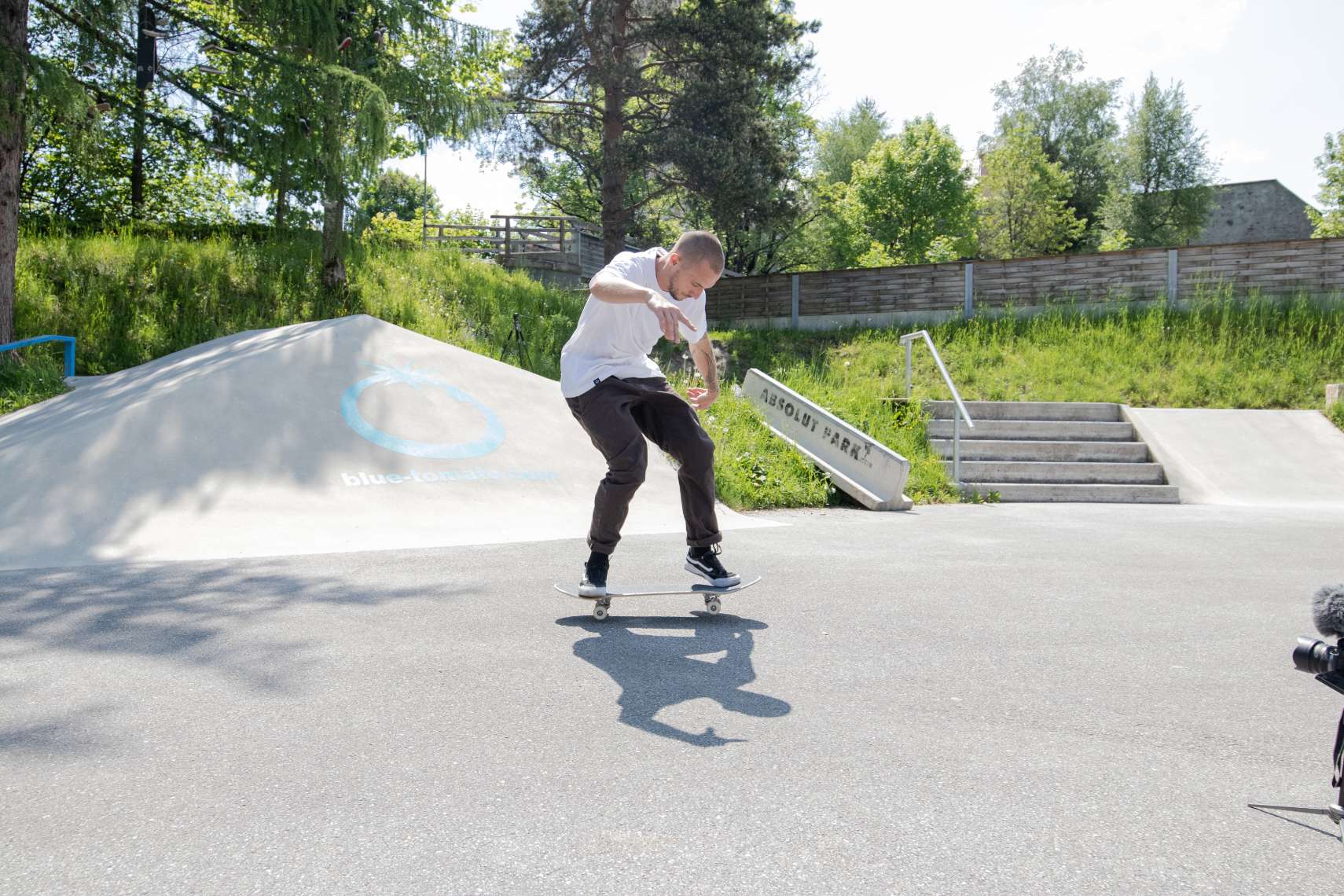
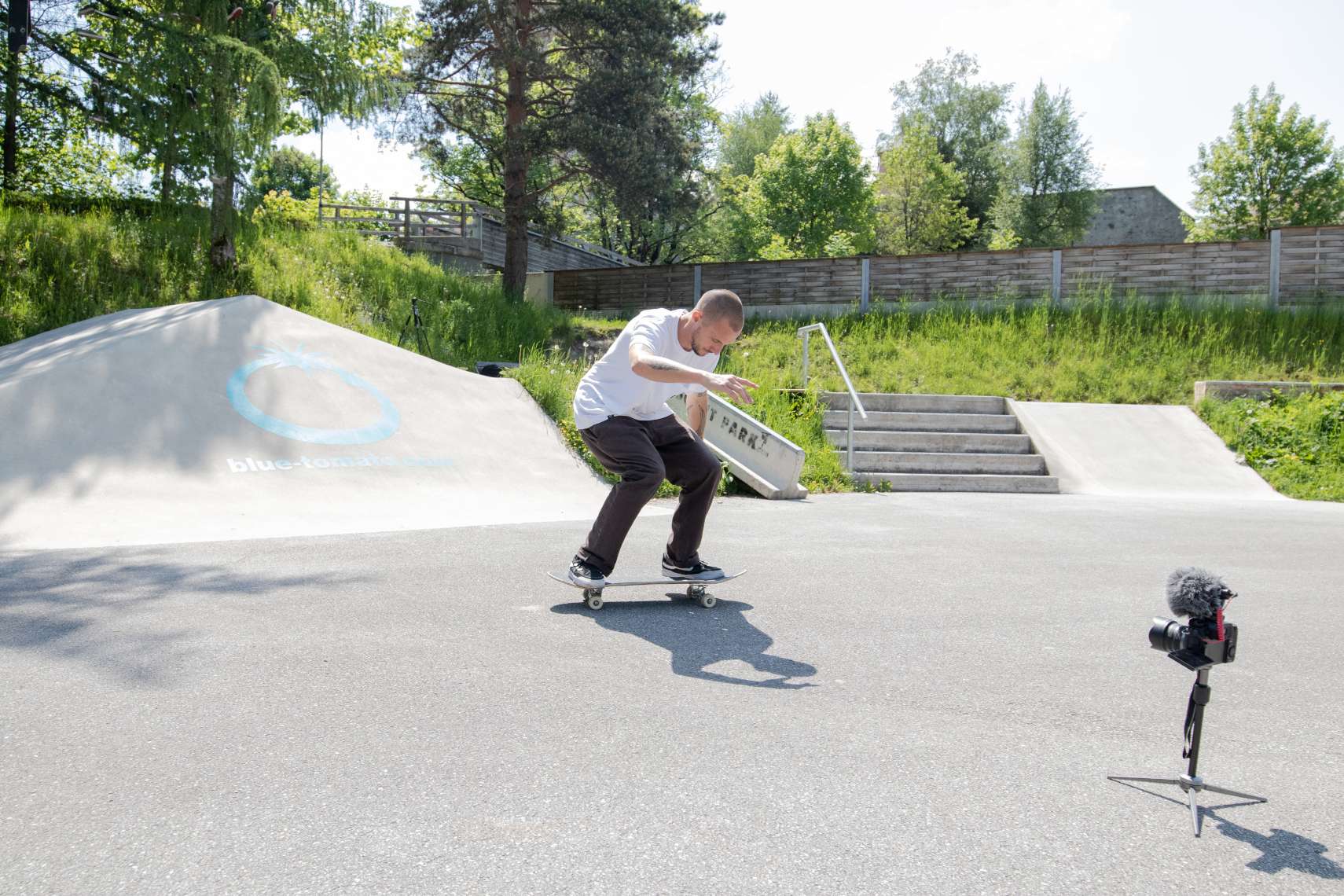
An essential: The Heelflip
The Heelflip is not only one of the most popular and – if executed well – most stylish tricks of all, it is definitely essential and has been celebrated in skateboarding for years. The logical consequence: You should also be able to do it!
Similar to the Kickflip, the skateboard turns around the longitudinal axis, only in the opposite direction. So you flip the board with the heel of your front foot and not with the toes. For the heel flip you should place your back foot in the middle of the tail and the front foot in front of the screws so that your toes hang a little bit over the edge of the deck. Your shoulders remain straight towards the skateboard the whole time. To get a nice rotation you should push your front foot away from your body, along the outer edge of the board. It's important to pop strongly with your back foot to get as high as possible. This makes the flip movement easier.
For some skaters, the heelflip is a little trickier than the Kickflip, but with enough practice you will learn both flips. Good luck!
Try a new stance: The Nollie
Ollie, Fakie Ollies, BS 180’s or Pop Shove-It's are becoming too boring for you? Then you’re ready for Nollie tricks!
The Nollie stance is once again a completely new challenge. It can quickly feel like you are a complete beginner and never did a trick before, but that is quite normal. The begining for all Nollie tricks is the simple looking "Nollie". In fact, the Nollie is very similar to the Ollie and the fakie Ollie, because the movement is pretty much the same. Only the foot position of the Nollie is different, the front foot is in the middle of the nose and your back foot is just before the screws of the tail. It is important that you press down the nose with a lot of energy and at the same time pull your other foot towards the tail to get your skateboard horizontally in the air. Simple, isn't it?
Don't stress yourself if you don't pop extremely high. Nollies are tricky and not easy even for experienced skaters. But that's the fun thing about skating, there are always new challenges.
A Trick for advanced skaters: The 360 Shove-It
Your board feeling and your Pop Shove-It's feel pretty good already? Then try a 360 Shove-It! The 360 Shove-It is definitely a trick for advanced skaters but that doesn't mean that you shouldn't try it. This trick has a lot of style for sure. The goal is to turn your skateboard completely 360 degrees horizontally (clockwise for regular riders, counterclockwise for Goofy riders) and land safely back in the direction of motion. Sounds easy, right?
For the 360 Shove-It, the rear foot must be placed in the "pocket" of the tail, so that the toes are hanging slightly over the deck’s edge. This way you can apply maximum pressure on your tail to turn the deck the full 360 degrees. You should really put a lot of power on the tail and pull your back foot backwards. The back foot is responsible for the pop and rotation, so it's the key to the 360 Shove-It. Your front foot should be placed slightly diagonally in front of the screws of the front truck and will be held still while moving to avoid flipping the deck. The front foot is responsible for guiding the board and should always stay above the deck in the air. You also catch the skateboard with it to land the trick stable on the screws.
This trick can take a lot of patience in the beginning, even for our team rider Marco Kada. Don't let it destroy your motivation. The 360 Shove-It is a real banger!
Climb up the ladder: The Treflip or 360 Flip
The 360 flip combines two flips into one: the 360 Shove-It and the Kickflip. So obviously, you should be able to do both of them. Once you got those tricks on lock, you can start trying the 360 Flip. Even pros like Marco Kada struggled to learn these, so don’t give up and keep practicing!
For the 360 Flip, your back foot needs to be deep in your skateboard tail’s pocket. Your toes should really hang a little over the edge, so you can put a lot of pressure into it to scoop the board around the full 360 degrees. Your front foot is similarly positioned as for the Kickflip. But flick the board a bit less than with Kickflips. With your back foot also giving momentum into the flip direction, you don’t want to overdo it.
Stop the rotation by catching the deck with your front foot, when it comes around, then also put your back foot on to land and ride away safely.
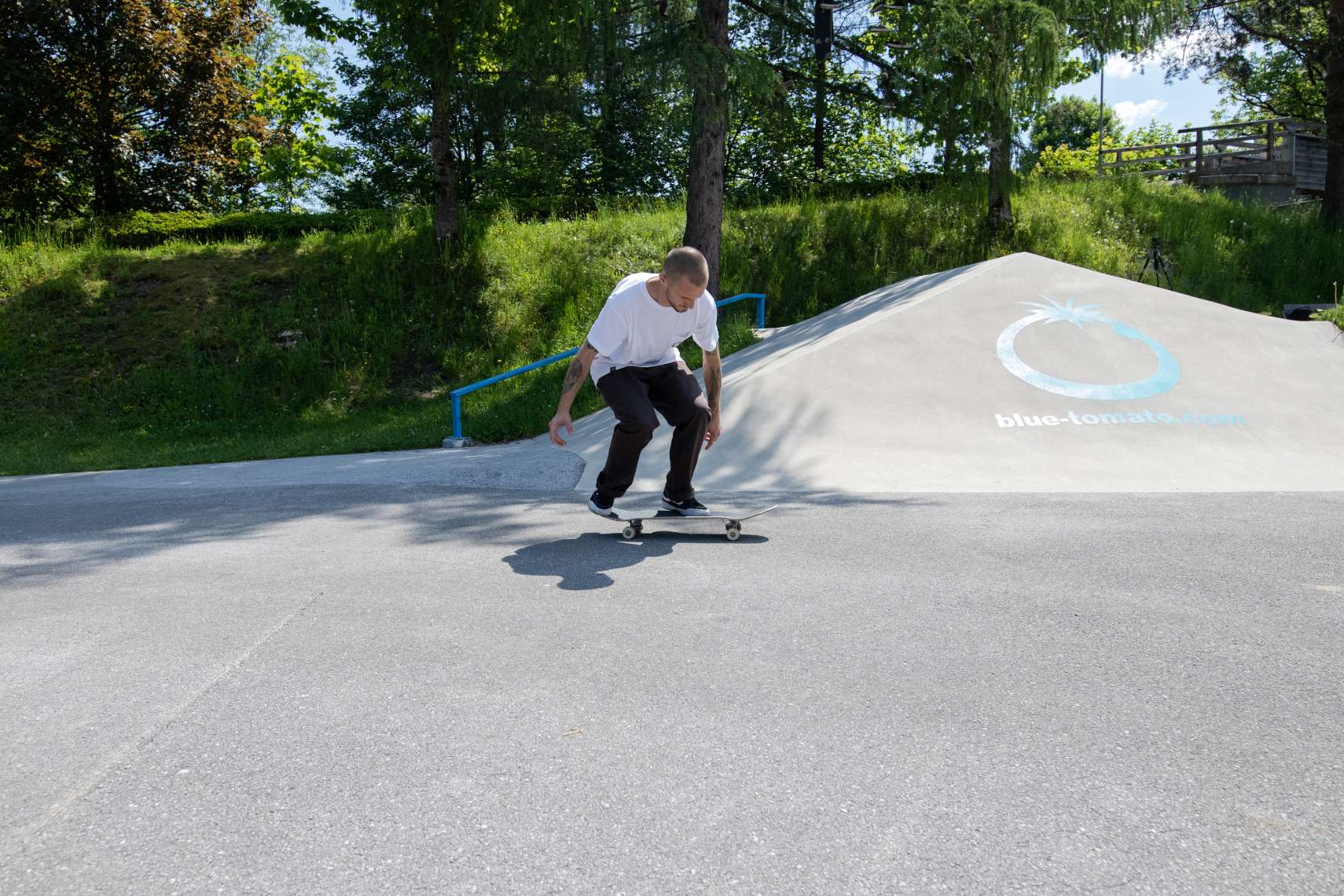
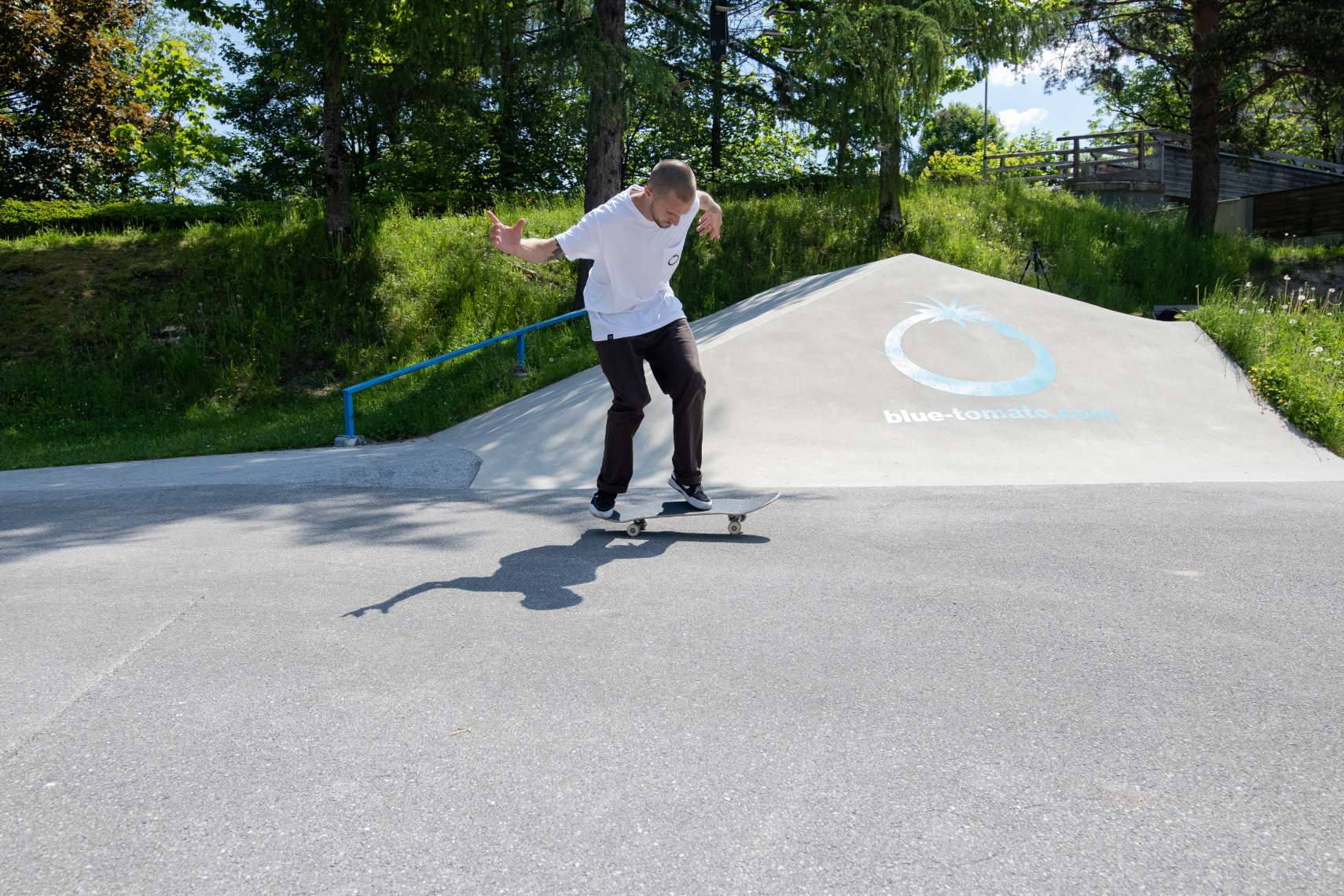
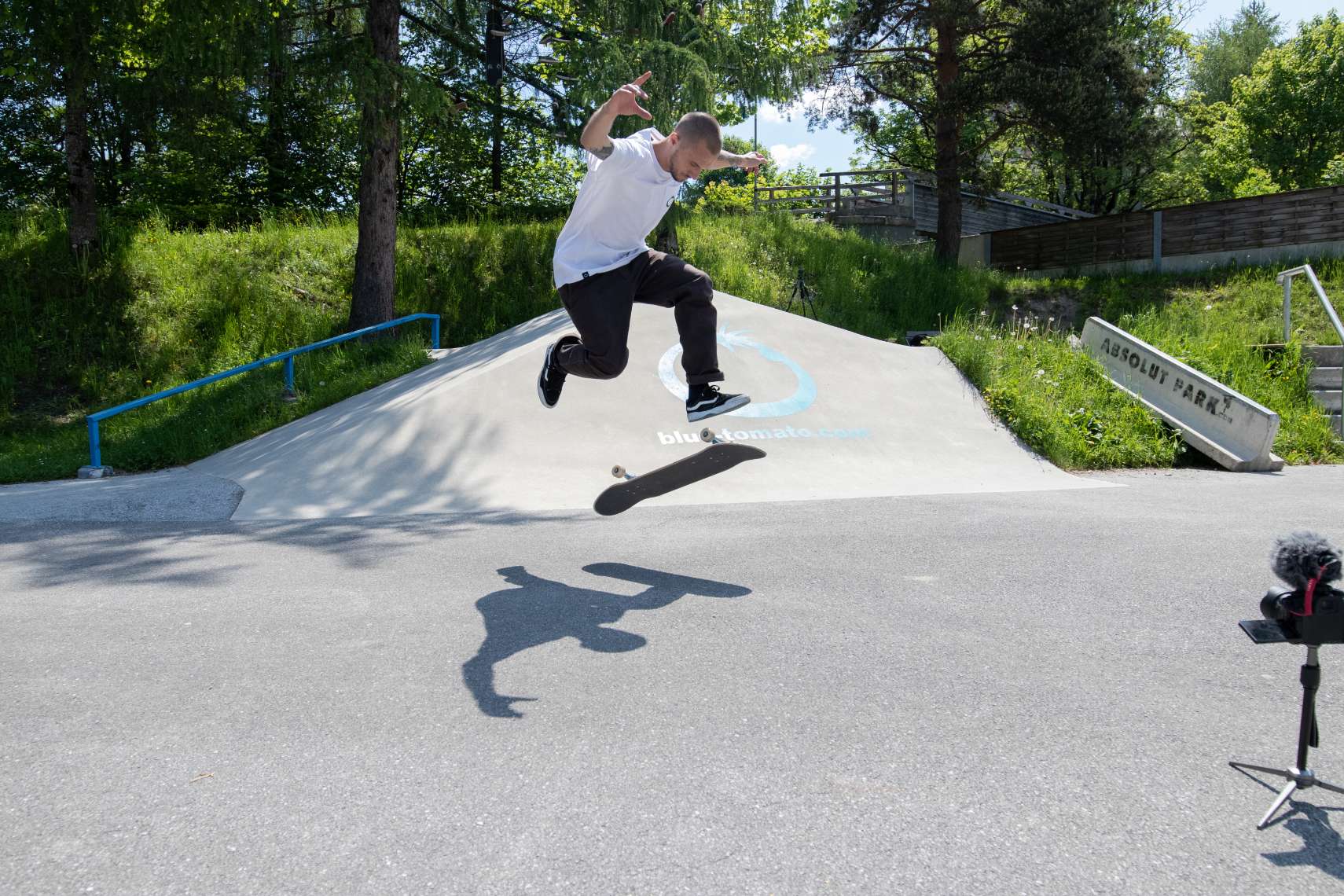

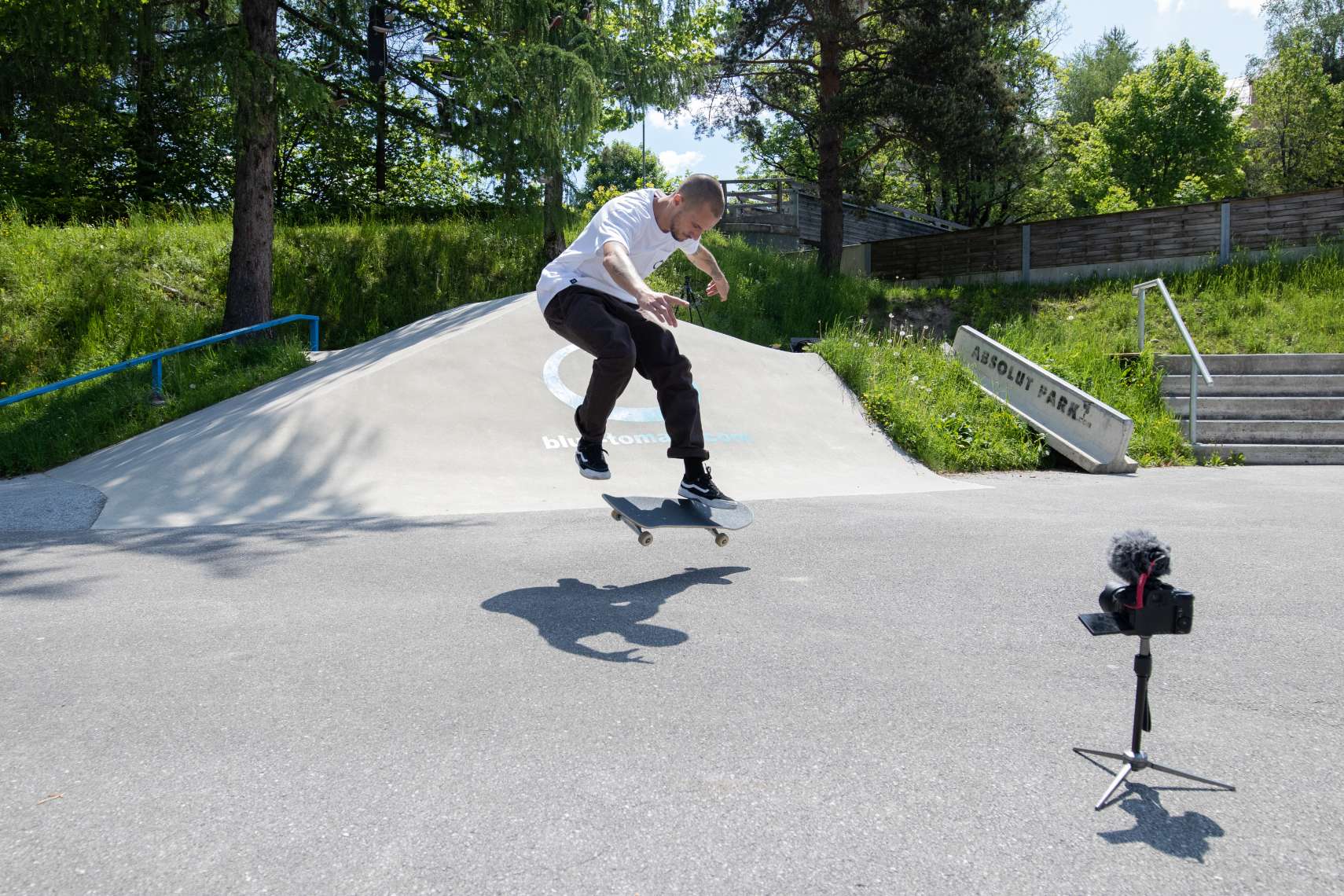
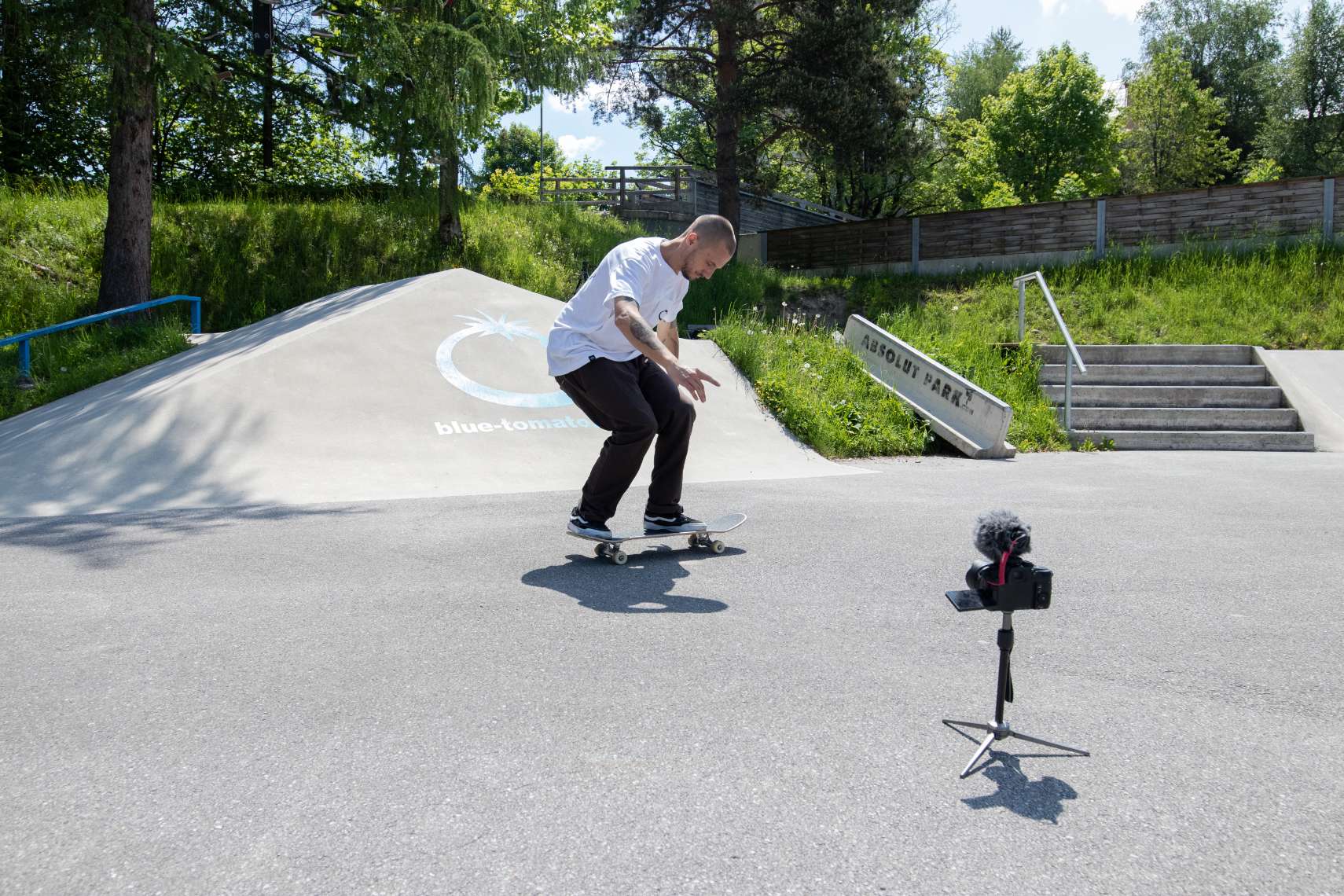
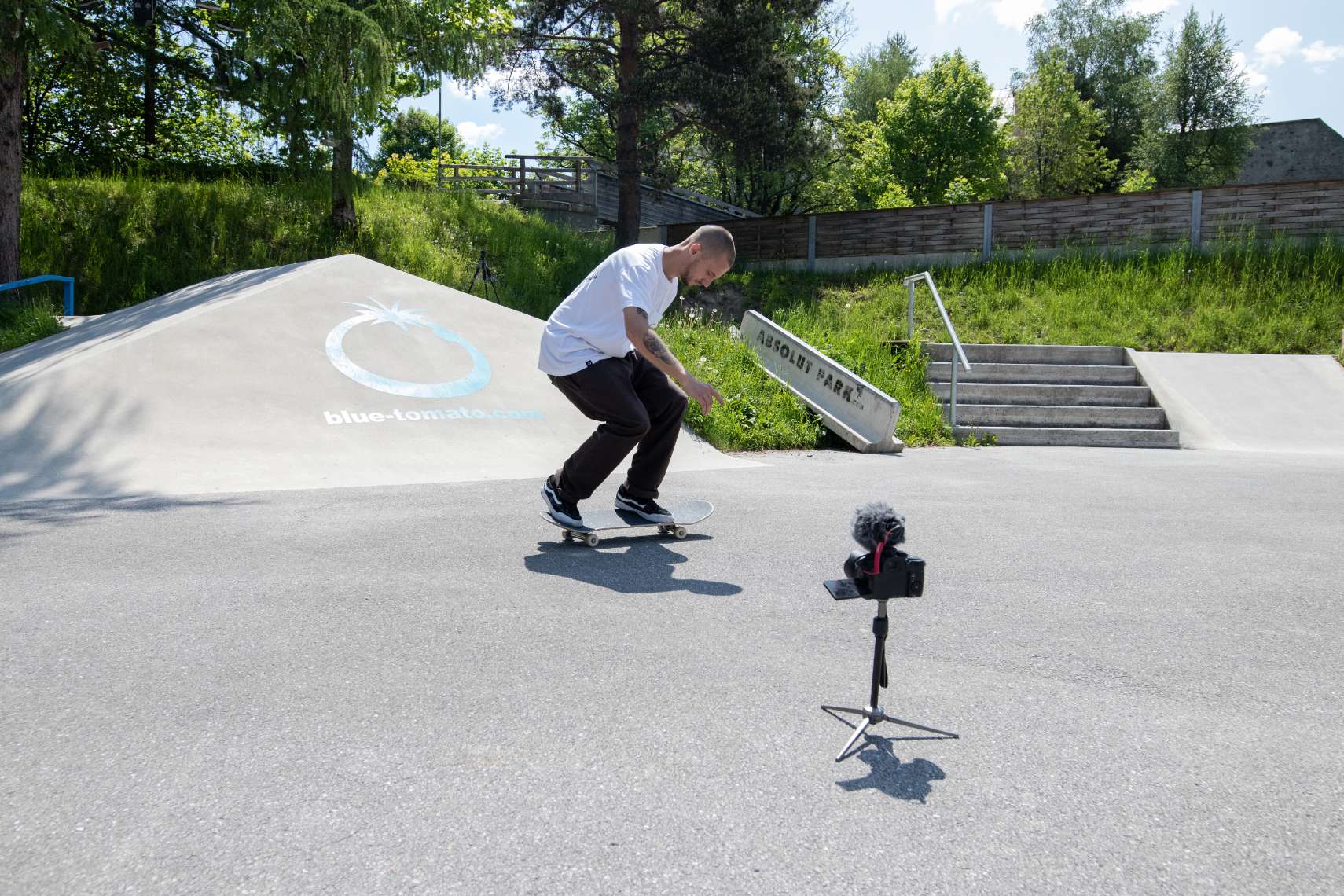
This story will get updated regularly with new trick tips!
If you want to learn more tricks, you should check out our advanced trick tips!


